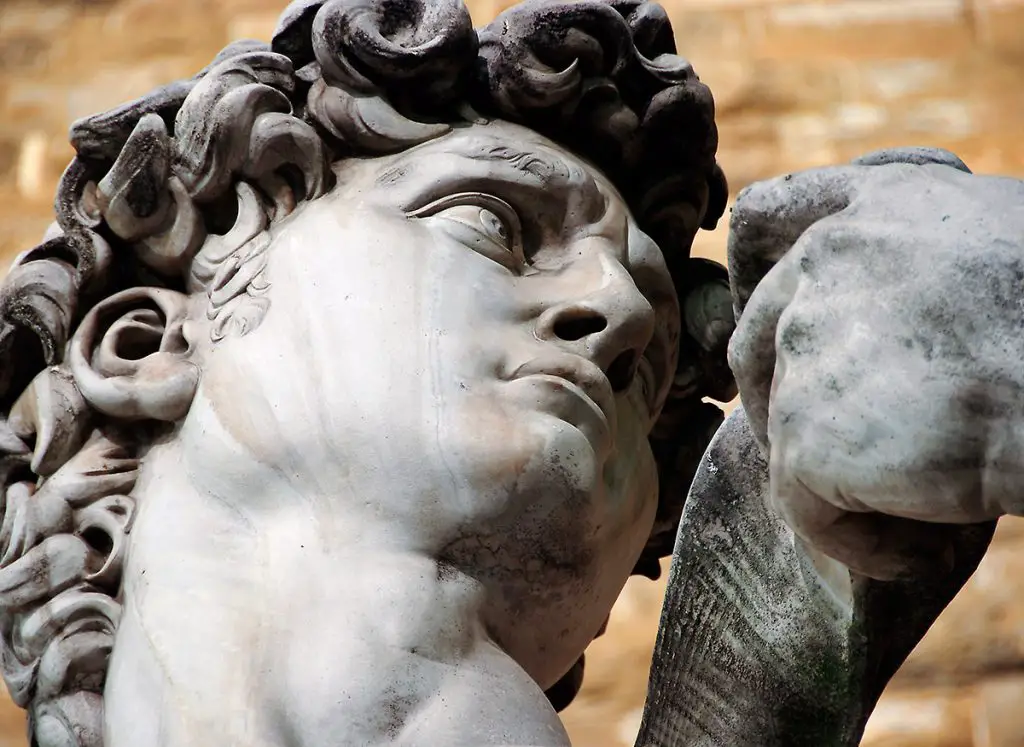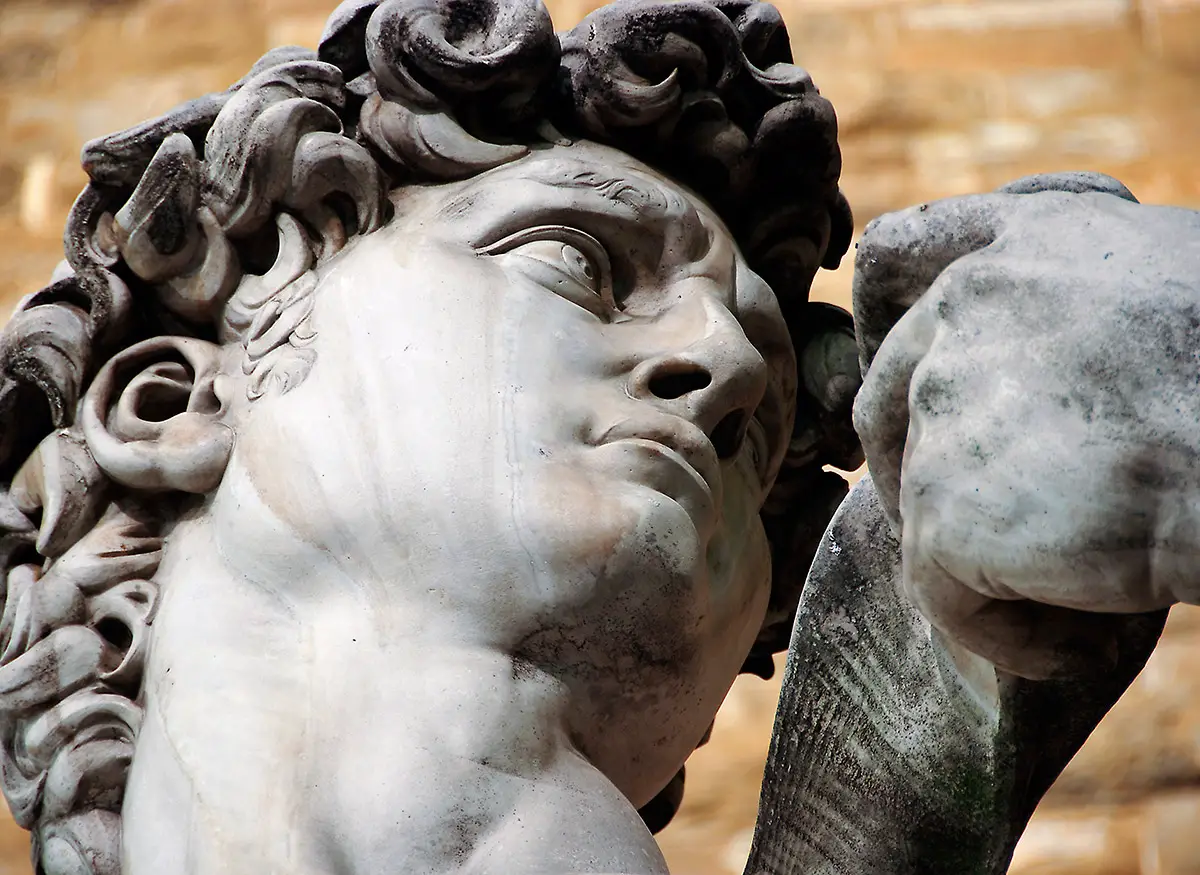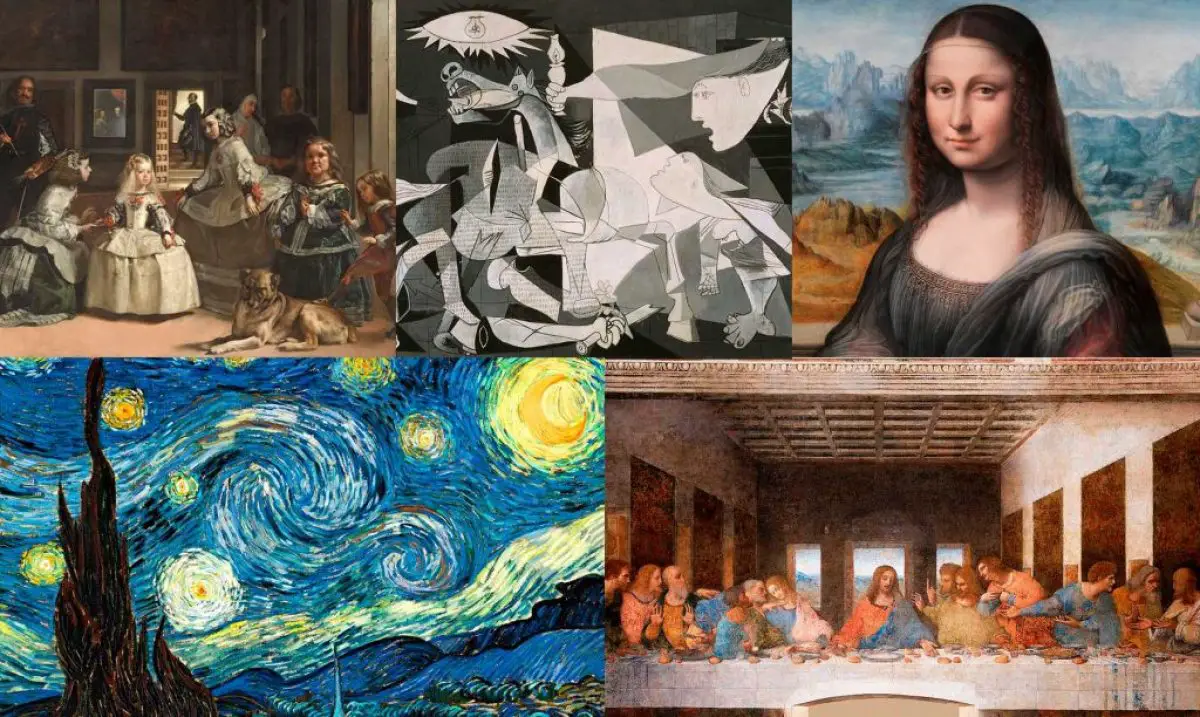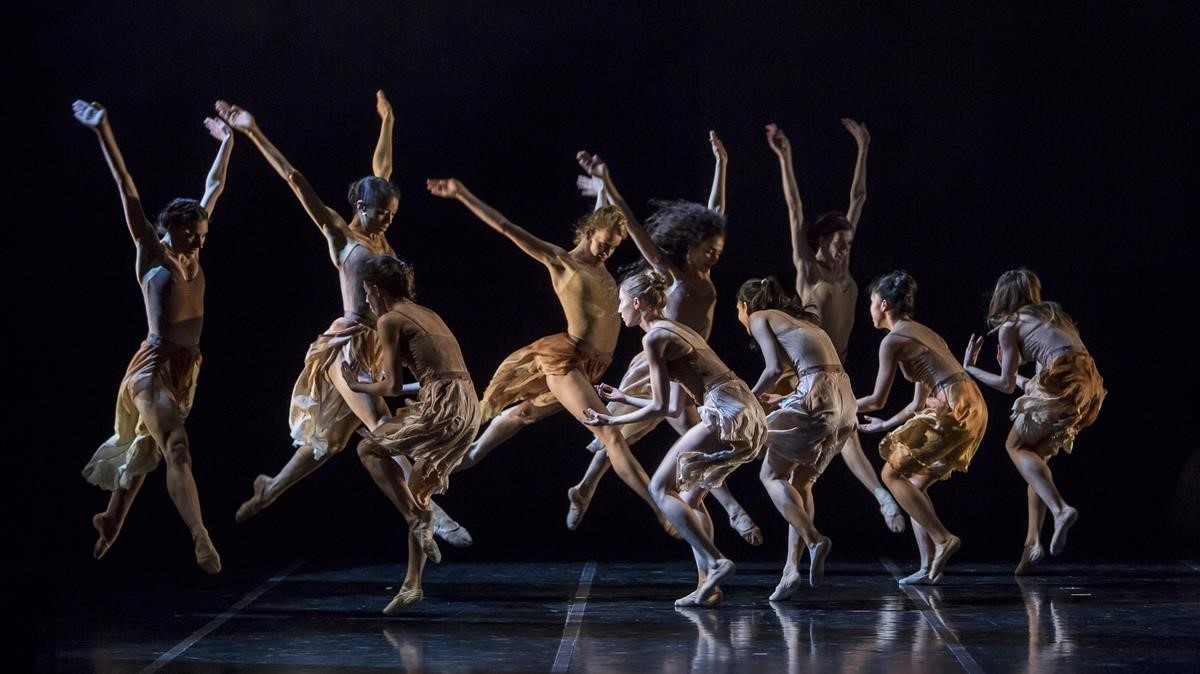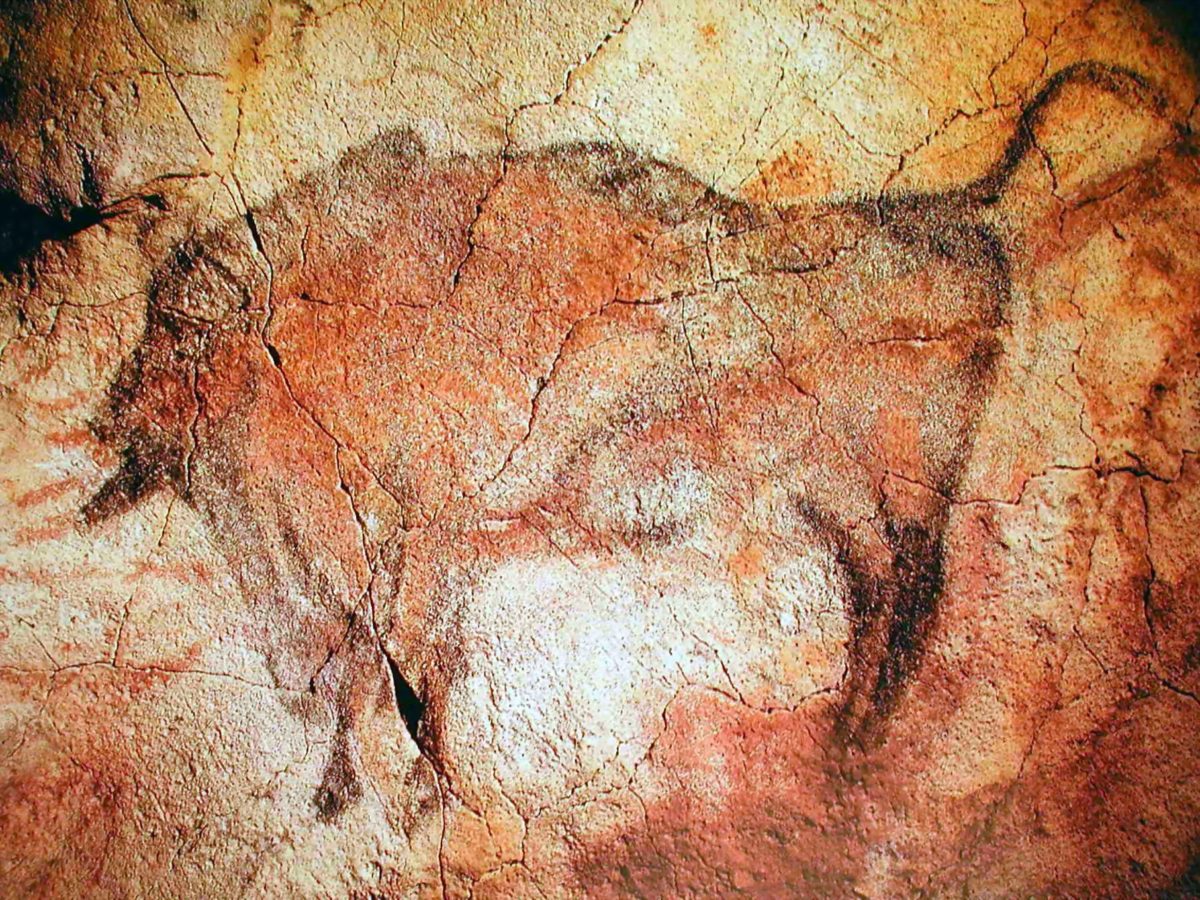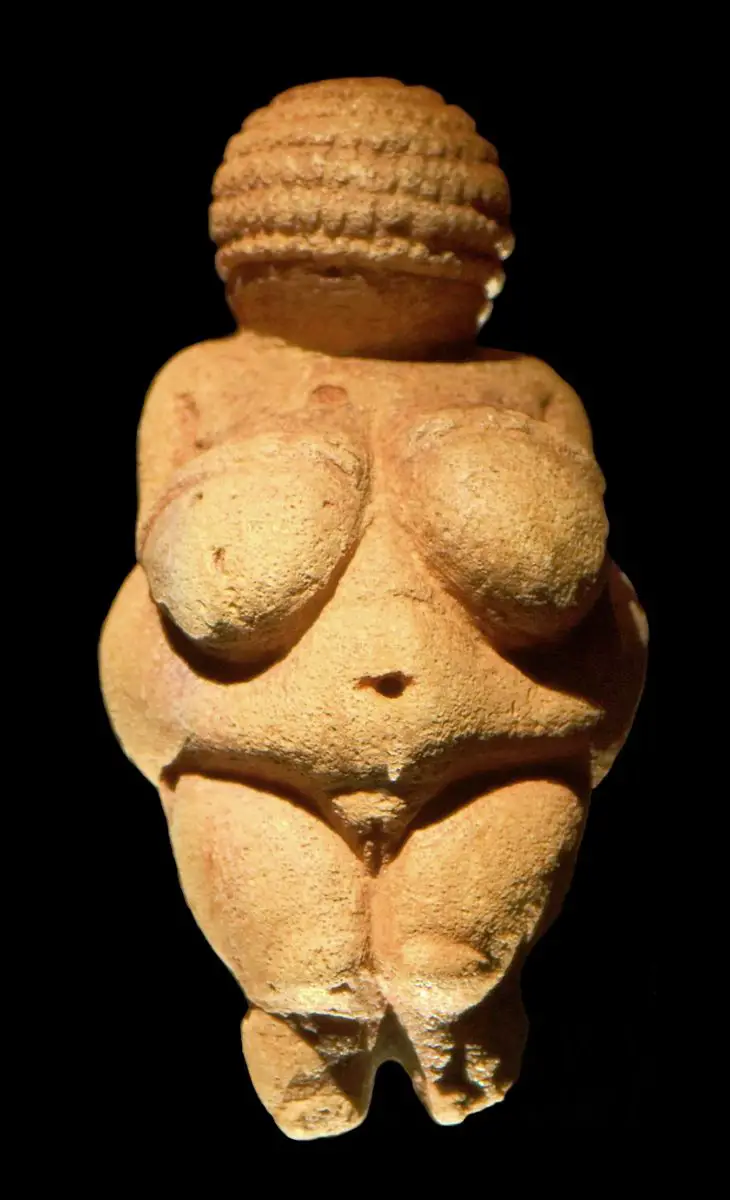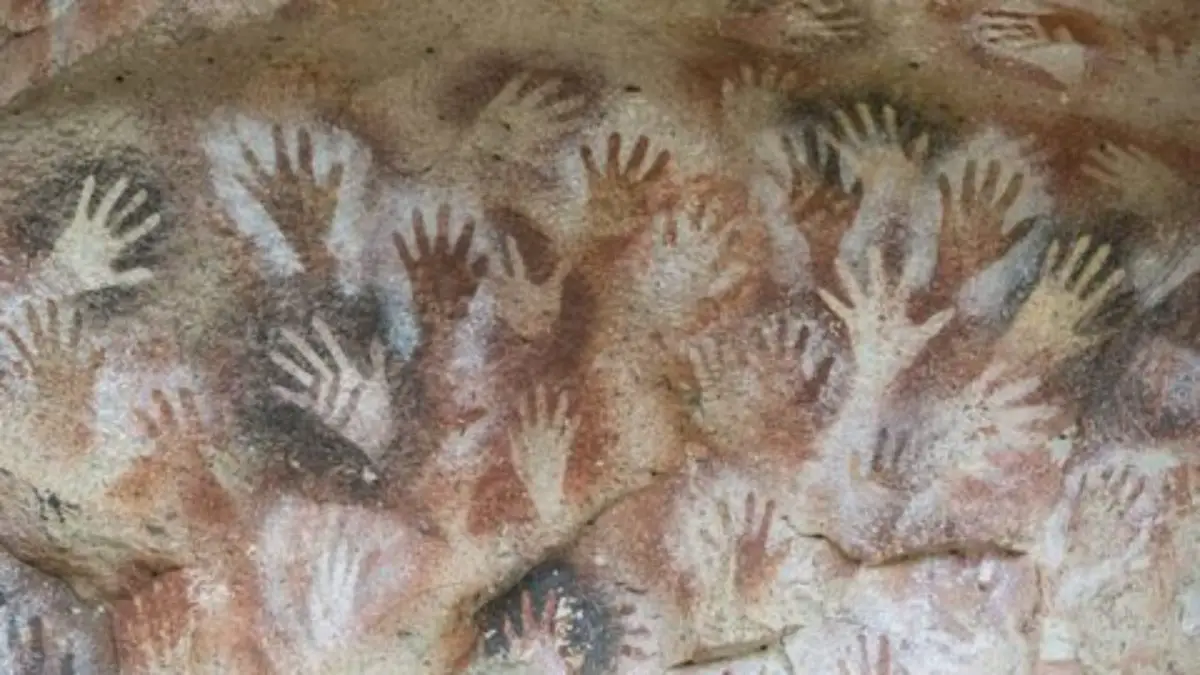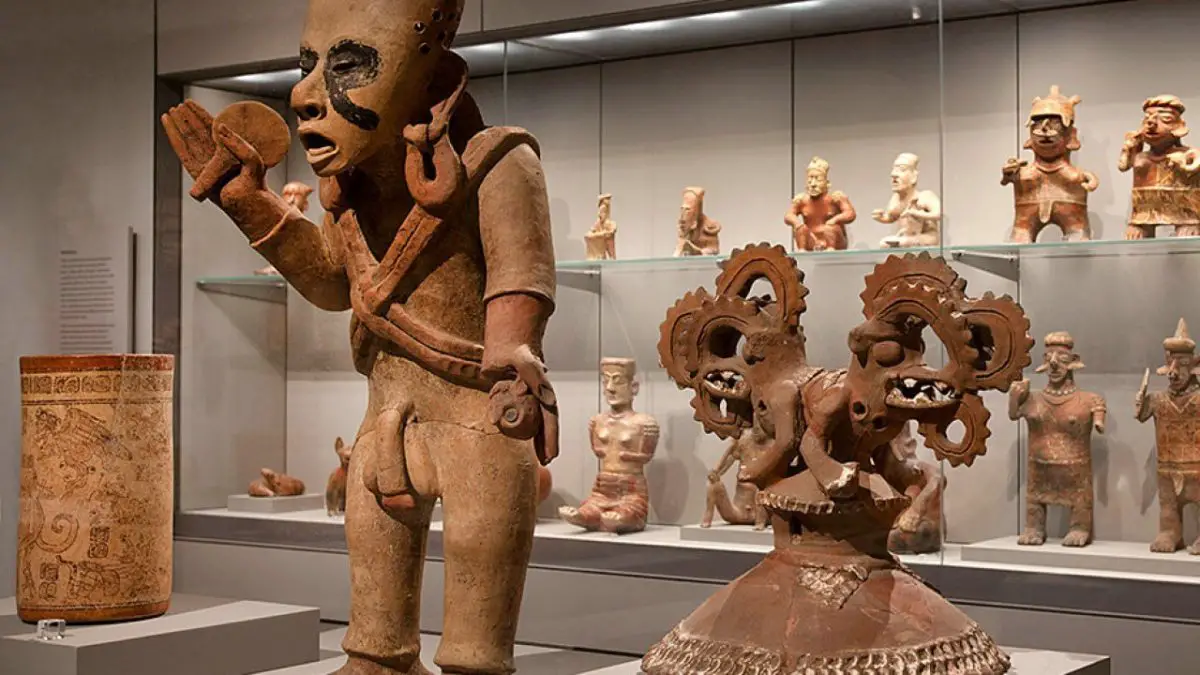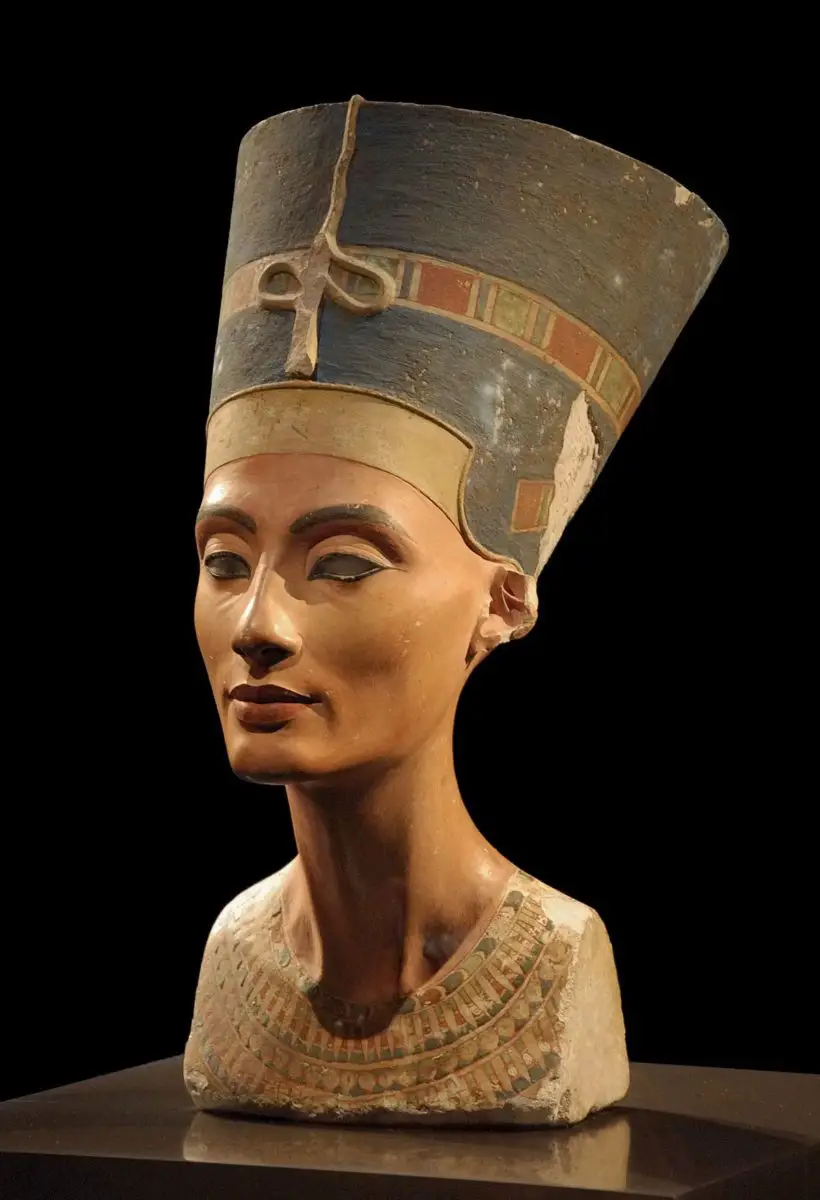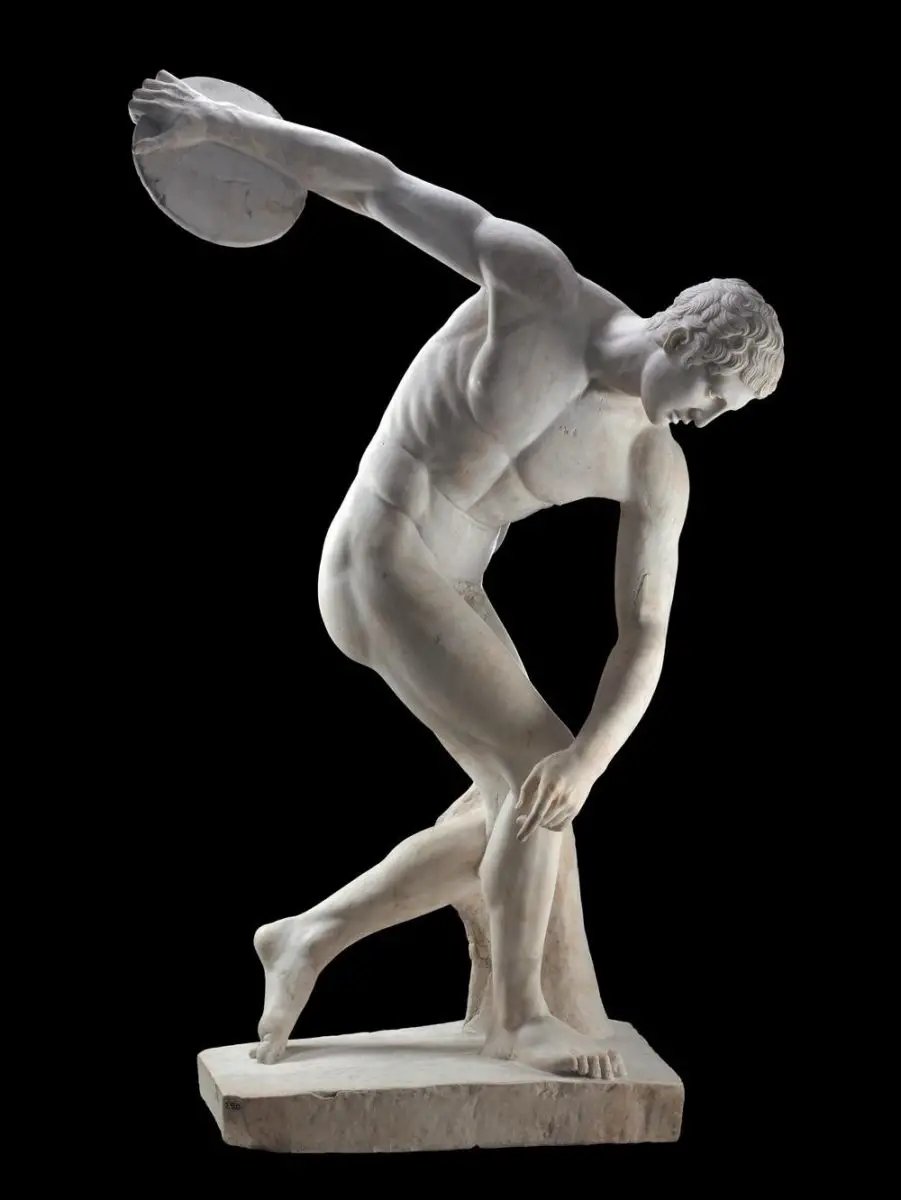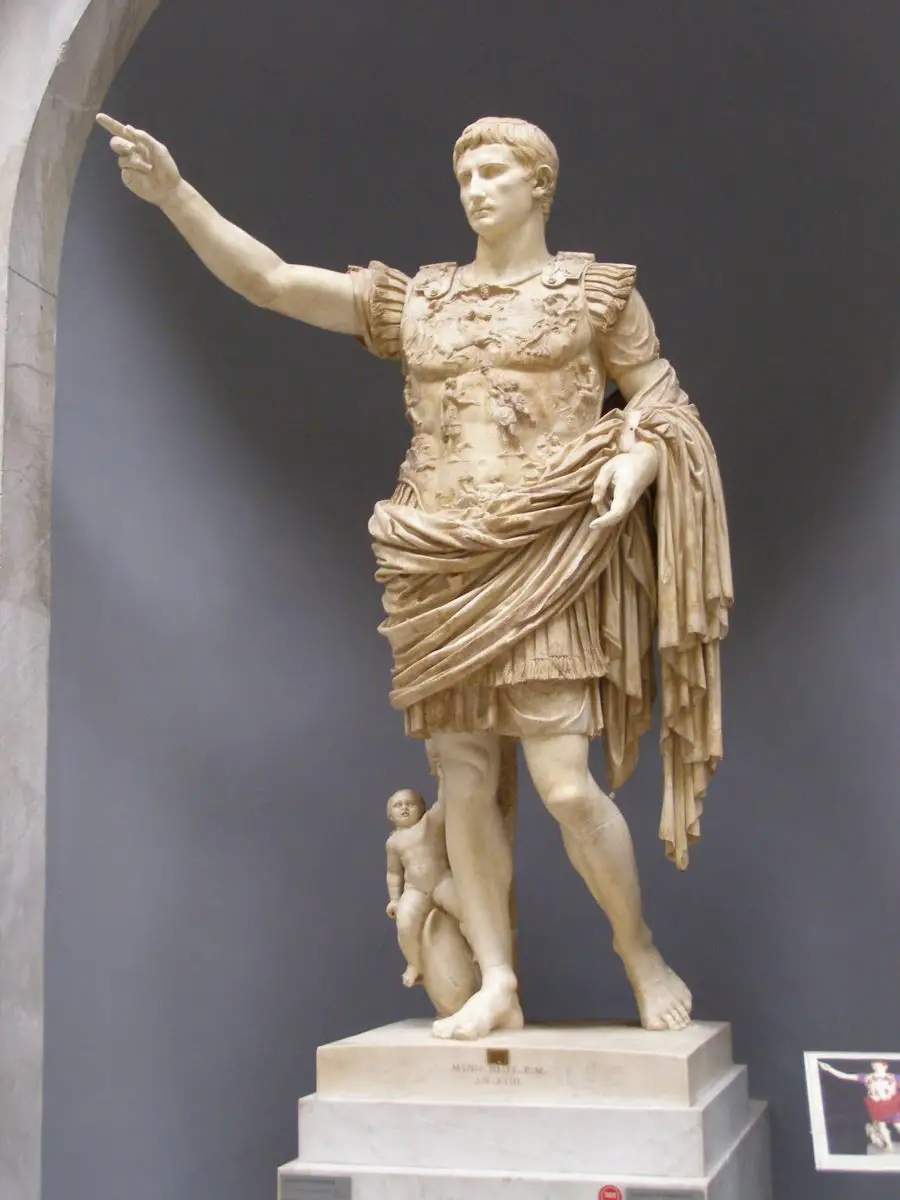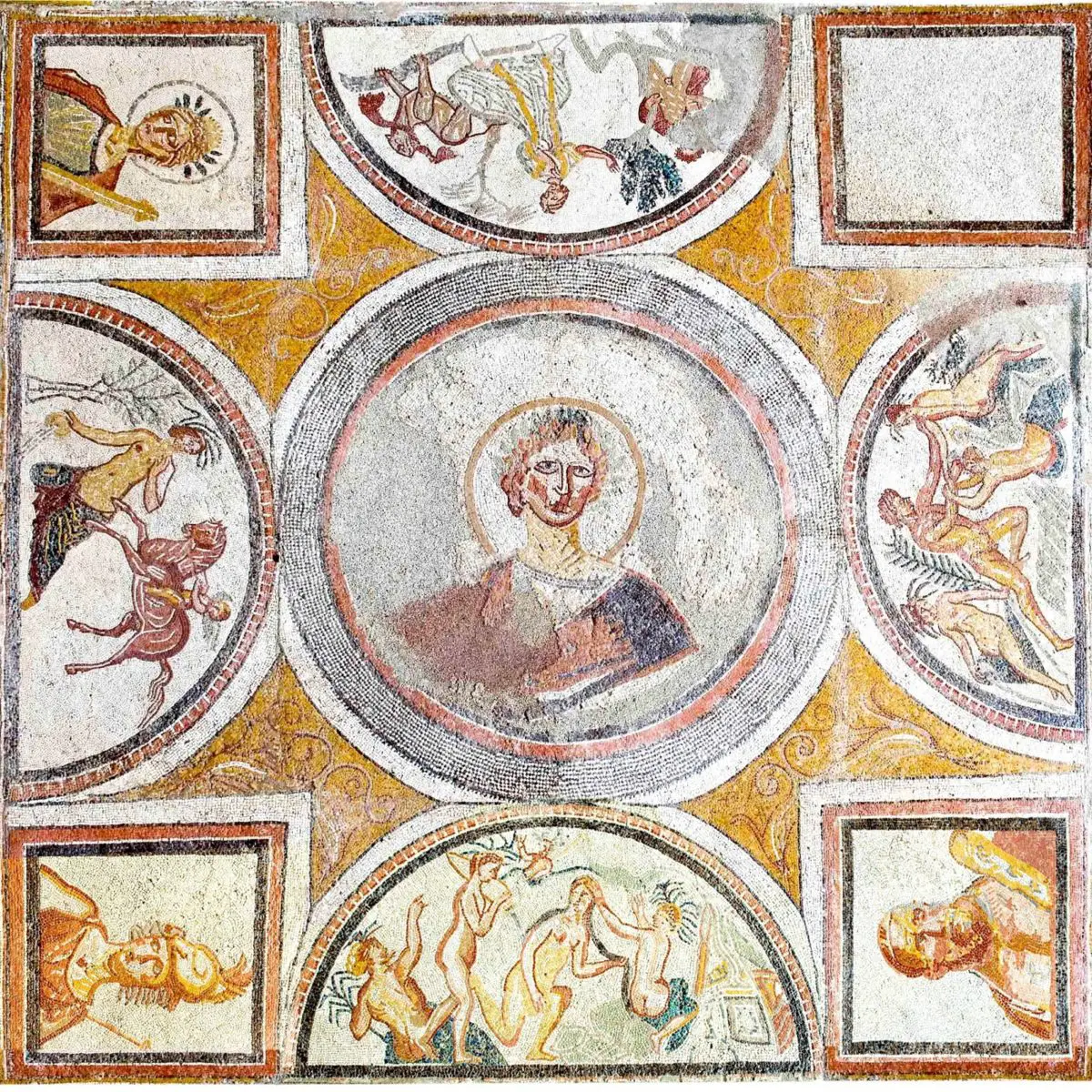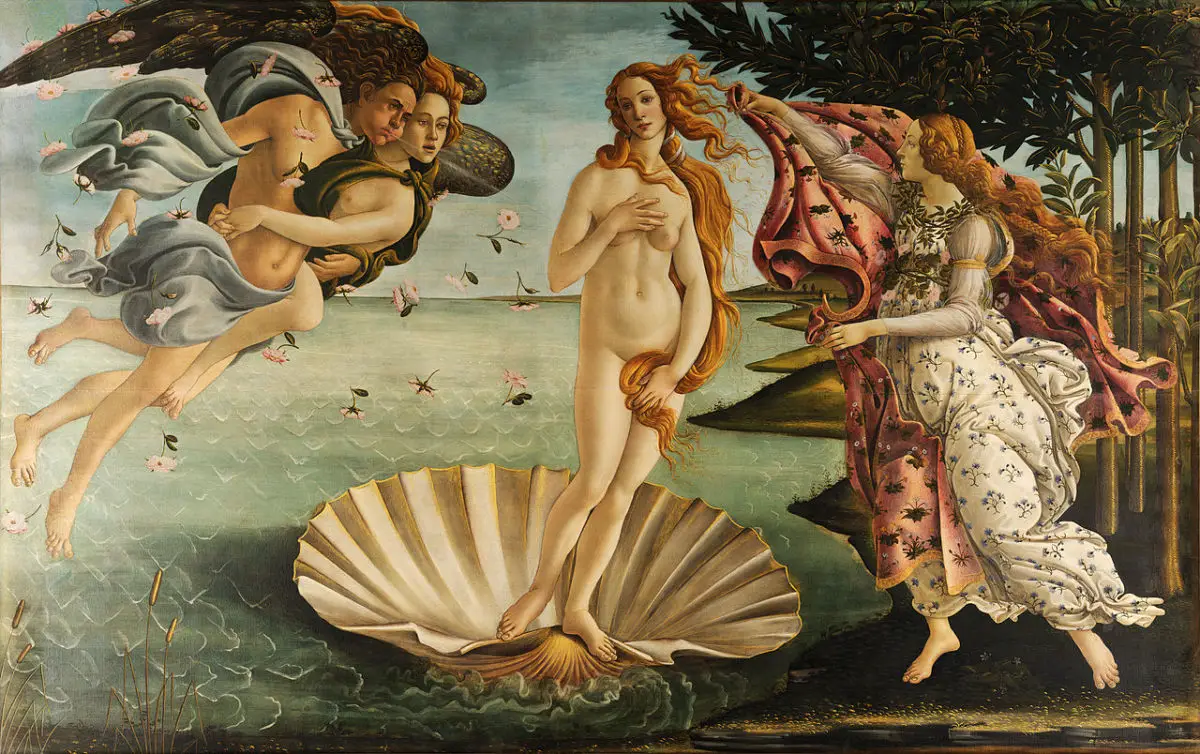We invite you to discover the history of art, how man has left his mark over the years, it is a really interesting story where you will be able to know in a timeline, its changes, expressions, influences and much more.
What is art?
There are several definitions of art, but I personally think that the closest definition is the one that says that art is a way of expressing the creative character that is part of the human being. Art is the tool that man has to express his feelings, his emotions, the way he sees life, the way he perceives his experiences and his relationship with the environment that surrounds him.
Art has always been part of the world and through it we can see our differences, cultural diversity, similarities and also similarities. There are many ways in which art is expressed in the world, in ancient times only a few disciplines were considered art, but the range has widened considerably as art now includes techniques and forms.
With advances in technology, new forms of art have been developed and although there is controversy about the definition of art today, it is still a creative expression of human beings, therefore it is art. In the variety of artistic disciplines, artists can express what they feel using an infinity of resources, forms and techniques, making art one of the most important components of culture.
If we look at the etymology of the word art, it comes from the Latin ars, artis, and the Greek τέχνη or téchne, meaning “technique”, which is why it is used to refer to trades such as blacksmithing. The word art is also used to refer to all manual processes that follow specific rules or techniques and are aimed at the pleasure or delight of the senses, which is why we hear about the culinary arts.
The earliest recorded artistic representations date back to prehistoric times, in which we can identify different stages within what we call the Stone Age. Thanks to the artistic expressions of the people who lived in those times, we can see the art and the evolution of a period that can be identified from the time we know of the existence of man on earth until approximately 3,000 years before Christ.
Art is part of all cultures and societies, it is in constant transformation because human creativity is dynamic, changing and varying in different times and societies. This characteristic makes it unique, that is, it cannot be repeated, and it has a subjective character, because the artist interprets and represents the world according to his own point of view.
In spite of this personal origin, resulting from the artist’s translation of what he sees or imagines, art is inherent to the human being, which makes it universal. Such interpretations and definitions are only possible by studying the history of art.
Art is a form of expression that is maintained over time; artistic expressions nourish the history of art and therefore the history of humanity, without stopping at differences of culture, language, race or gender. It is the most universal form of communication created by man. Art is a constant search for beauty, which is unashamedly given to all who wish to contemplate it.
Most people may see art in a simple and decorative way, but in reality art has a very important role to play in the development of human beings and societies. Through art we have been able to document the history of civilisations that we have never seen before. It allows us to learn about different societies, cultures, customs, identity of tribes and communities. It is a way of transmitting values and getting to know the world.
Art is the testimony of our existence as humanity. Because of its importance and the need to study it for knowledge, there have been different ways of classifying art, and it can be classified according to its discipline, in the plastic arts, which are those expressions that modify the materials with which they work, creating two or three dimensional surfaces, exploring the plane, volume, among other types of elements.
Also in the great arts, which include all those works of art that are intended for contemplation, while the minor arts are utilitarian artistic elements, such as goldsmithing, mosaics, stained glass, among others. There are also musical, literary, scenic and audiovisual arts.
However, the fine arts are ranked hierarchically and only seven of them are covered: painting, sculpture, literature, music, dance, architecture and cinema, including the first half of the 20th century.
The history of art allows us to study the evolution over time, which facilitates our understanding and for its study, the history of art classifies it into different periods, styles or artistic currents, which we will learn a little more about later. Another of the resources that the history of art allows us to understand the different artistic expressions, identifies the characteristics that distinguish the authors, the works, the periods, which allows us to appreciate art within history.
Art history timeline
As we have said, the history of art allows us to know the evolution of societies, their culture, their customs through time, the characteristics, will even allow us to identify the influence that the art of a given moment, region or civilisation can have on another, and in this way to construct a timeline.
In constructing the timeline, we can then identify the different artistic movements that emerged and determine the stages of each. There is evidence of art in Prehistory, the Ancient World, the evidence of the creative process in the Middle Ages, the historical period of Western civilisation from the 5th to the 15th century, the Modern Age and the Contemporary Age, we will comment on art in each of these periods below.
Prehistory
Prehistoric art is developed by man in one of the most primitive stages, the art of the Stone Age, divided into the Upper Palaeolithic, Mesolithic and Neolithic, up to the Metal Age, where we find the first artistic manifestations of Homo sapiens, as our species was originally called.
In the Paleolithic era, estimated to be between 25,000 and 8,000 BC, people lived in caves, hunting and gathering to survive.
The art is cave painting. Then comes a period between 8,000 and 6,000 BC, known as the Mesolithic, and finally between 6,000 and 3,000 BC, known as the Neolithic, in which man becomes sedentary, the society in which he establishes himself is more complex than the first groups, and art also begins to appear in other forms, such as handicrafts.
When the Metal Age arrives, between 3,000 and 1,000 BC, the first protohistoric civilisations are recognised. With this in mind, let’s look a little more closely at each of the periods that make up the prehistoric age and their contribution to art.
The Paleolithic
The Palaeolithic is a period that lasts from about 500,000 to 30,000 years and is better known as the Stone Age; the generic name of the period comes from the fact that most of the objects and finds are made of stone.
It is important to point out that everything we know about the periods up to this point can change drastically in an instant, as advances in technology have allowed important discoveries to be made that can alter what we know today, so ironically we can say that nothing is set in stone.
There is evidence that art had some kind of religious meaning, something that was unknown until recently. Neanderthals made art in the form of objects. When we talk about prehistoric art, it is impossible not to talk about the caves of Altamira or those of the French Dordogne. There are paintings of animals such as mammoths or aurochs, horses, gazelles, bears, but also of their hands and human figures.
If we look for the outstanding characteristics of the paintings of this period, we can highlight the absence of landscapes to accompany the stories of hunting or fighting, and we should also point out that the paintings are full of movement and naturalness. The painters used natural pigments, mainly ochre, coal-black and reddish tones, mixed with animal fats and painted with branches, fibres and their hands.
Other forms of art from this period include small female sculptures, such as the famous Venus of Willendorf, which depicts the anatomy of the female body in detail, as well as small ornaments for personal use and ritual objects, which are part of the artistic legacy of the men and women of the time.
If we leave aside the artistic interpretation of each of the objects and artistic expressions that have survived through time to the present day, we cannot be sure that they are the only ones, or that stone was the only material used, but it was the least perishable, what we must emphasise is the existence of creativity, artistic sensitivity and a sense of beauty.
Mesolithic
The Mesolithic period is situated in the middle of the Palaeolithic period, in this period we find all the artistic expressions from the Upper Palaeolithic to the Neolithic, specifically between 10,000 and 5,000 BC.
Art from this period has been identified in several continents, including Europe, Asia, Africa, Australia and America. It is important to emphasise that this was a period of important changes on a planetary scale, as it was during an interglacial period, i.e. when there was a thaw.
In this period, man was still a nomad and it was only the beginning of sedentary life. Among the objects found, the most outstanding are the boulders carved with bands and dots by the Azilian culture. Relief sculpture, figure carving, wood carving became very important, the decoration of personal objects appeared, known as movable art, and pottery was developed.
As far as painting is concerned, the Cueva de las Manos, in the valley of the river Pintura, in Patagonia, Argentina, shows a more rational art, where the abstract begins to appear. Meetings and activities such as hunting, dances, rites and war scenes are important in the expression of art.
Neolithic
The prehistoric art of the Neolithic period is determined by the end of nomadic life, so the findings show us the art and crafts of societies that practised agriculture and animal husbandry for their sustenance.
Ceramic objects for everyday use are present, but also the ancient pottery of terracotta sculptures as one of the main artistic expressions. The Neolithic is the beginning of civilisation, an explosion of creativity expressed in different ways and lasting for different periods in each continent.
The sedentary lifestyle of human groups introduced megalithic art, which can be seen in the construction of temples, sanctuaries, tombs and others. What marks the beginning of the Neolithic is agriculture, and the use of agriculture is different in different regions and continents of the world, and the dates of its beginning and duration are still under discussion. As human groups realised that they could achieve greater security by making themselves less vulnerable to predators, there was significant population growth.
Although there are finds of pottery much older than the Neolithic, such as Chinese and Japanese ceramics, it is worth highlighting the Chalcolithic pottery from Persia, estimated to date from 5000 to 3500 BC, in which we can see ornaments of birds, plants and also human figures.
In this period, the creation of objects for more than just ornamental use was developed: wall paintings, statues and patterns for ceramics and textiles, the carving of semi-precious stones and carved tortoise shells. Functionality was not abandoned, but in the Neolithic, beauty was sought.
The Ancient Age
The Ancient Age is chronologically located at the beginning of art history in the 4th century BC until the defeat of the Roman Empire in the West in the 5th century. The art of the ancient world is defined as all works of art or objects that are considered antiquities, so it is as broad as all types of art that are not classified as modern art.
There are various works that were not considered works of art at the time because they were utilitarian in nature, i.e. they were objects of daily use at the time, but these same objects now occupy places in our museums and are recognised as priceless works of art. This could very well lead us to believe that art gains value over time and that it is old for others, which is a way of revaluing it.
For their part, great works such as sphinxes depicting deities or encompassing religious themes were considered great works of art. The history of art can be divided into different branches or disciplines, allowing us to study the art of the ancient world in its various expressions and to see how it has changed and developed over time. In the ancient world there were a large number of recognised arts, such as goldsmithing, perfumery, gastronomy and a range of other crafts and applied arts.
Mesopotamia
Mesopotamia, along with Egypt, is recognised as the cradle of civilisation. It is 5000 years ago that the Sumerians and Akkadians decided to settle in the area of the Tigris and Euphrates rivers that we now know as Iraq.
Most of the art produced by the Sumerians has a religious significance, but because politics and religion were so closely linked at the time, it is a little difficult to find a precise division between the two in the history of art.
One of the characteristics of the art created at that time is the emphasis on aesthetics. This characteristic is so important in the works of art that it is transferred and continued in civilisations after Mesopotamia, and when archaeological discoveries are made, features can be identified that show continuity.
The illustrations with small pictures, the clay seals, the gold and silver work are truly original and varied in the themes developed. As far as architecture is concerned, not much has been preserved of the urban buildings of Mesopotamia, which is due to the type of materials used; in the absence of stone, bricks and mud bricks were used, but it can be seen that the cities were developed around the temples and palaces.
Sculpture, made of limestone or alabaster, was mainly in the form of circular sculptures and reliefs. The themes developed are mostly of everyday life, giving us an insight into the Sumerian culture of Mesopotamia. One of the most developed artistic expressions is the work in gold and silver, among which those found in the tombs of Ur stand out.
About Egypt
I have yet to meet a person who is not attracted to Egyptian art, its architecture, sculpture and painting manage to combine the historical, the mysterious and the religious with a beauty that leaves every earthling in awe. Egyptian art is an art that is not influenced by other types of art, the geographical location allows it, the materials used are chosen to perpetuate the works created and that is why we still find finds in a very high state of preservation.
The pharaohs and priests are the most favoured, being a fundamentally religious art, official of the court, the Egyptian art follows some rules and for this reason it is very similar, since the quality of the finish is more valued. In Egyptian art, sculptors and painters were considered artisans, while architects, who had direct contact with clients, were considered to have a higher level of recognition.
On the basis of the above, we can identify two types of workshops: the official ones, located near the palaces and temples, and the private workshops, which had nothing to do with the monarchy. Unfortunately, due to the quality of the materials used by the artists of the private workshops, there is almost no evidence of their work.
Ancient Greece
The art of ancient Greece is one of the most fertile, splendid and beautiful after the Archaic period. Ancient Greek art developed in a flourishing and expanding civilisation, economically strong and politically stable, despite the fact that political changes were forced, monarchies were replaced and the ruler of the day was overthrown. In the 5th century BC, Greece was the capital of Athens and Attica.
In the 6th century, abuses of power led Pisistratus to lead with the support of the people, his government was beneficial, where art sought to beautify the cities, but his successors in the monarchy were abusive and were overthrown. However, internal strife was only the beginning of successive periods of warfare known as the Median Wars, when the Persian Empire controlled Greek territory.
The Athenian-led League of Delos put an end to Persian rule in Greece in 449 BC, ushering in the ‘Age of Pericles’. The hegemony achieved, however, led Athens to confront the second Hellenic power, Sparta. This period is known as the Golden Age, the moment of artistic splendour in all its forms, which laid the foundations of our civilisation.
Monumental architecture continued to develop, such as the Parthenon, the Temple of Artemis and many others. The Greek sculptures we know from Roman copies, but they sought perfection and detail, unfortunately much of the sculptural wonders of ancient Greece were destroyed in the Middle Ages by Christianity, which wanted to put an end to paganism.
The Parthenon friezes and some sculptures survived, and excavations have brought to light works such as the Venus of Milo. The sculptures were characterised by their polychromy, although we only know the use of white marble, of which there is very little evidence.
The figures are serene, harmonious, balanced, with an idealised realism. One of its greatest exponents was Phidias, known as the sculptor of the gods. His work highlights the use of a technique called “wet drapery”, because the folds of the tunics stick to the body, emphasising the anatomy. The works of art of this period reflect beauty, both external and spiritual.
Rome
With a history of persecution and death, Rome was founded in 753 BC. We will not go into detail about its founding and expansion, but it is important to note that it grew out of settlements of Indo-European Latin, Sabine and Etruscan tribes. Abuses of power led to the fall of the kings and the creation of the Republic, where the Senate was the real decision-maker.
The Romans gradually subjugated the inhabitants of the Italian peninsula, including the Etruscans and the Greek colonies of Naples, and in the last half of the 3rd century BC they came into conflict with Carthage and began their Mediterranean expansion, conquering Sicily and Iberia. They defeated the Greeks and the Seleucids in the 2nd century BC.
The immense expansion brought about profound changes in Roman society; Roman art was directly inherited from Greek art, but the Romans would be known not only for their temples and monuments, but above all for their engineering works, such as their aqueducts, bridges, catacombs, baths, the Colosseum, and many other works.
The plastic arts also show the strong influence of Greek art, with a slight shift towards a search for realism rather than idealism. We know his paintings from the city of Pompeii, which was buried by the eruption of Vesuvius, and this natural disaster made it possible to preserve the murals of the houses.
One of the most famous Roman artistic expressions is the mosaic, a technique of Greek origin that the Romans mastered. In terms of architecture, the use of arches and vaults stands out, a radical change from Greek architecture. The expansion of the empire led to the development of urban planning, which was modelled on the city of Alexandria.
The centre of the city was the Forum, which housed temples, the Senate, shops, libraries, baths and much more. The triumphal arches are a creation of Roman art, built in the forums, on bridges, on public roads, in the most crowded places, so that they could be seen by everyone. Rome’s artistic legacy is immense because it is timeless and has been maintained over the centuries because that was the aim, to remain unchanged over time.
The Middle Ages
This is one of the longest periods in the history of art, the Middle Ages, from the 10th century to the medieval 15th century, spread over North Africa, Europe and the Middle East. During this period, various artistic movements can be identified, which can be divided into different periods.
Art has several stages of flourishing, called the Renaissance, this period has truly outstanding works of art, the artists remained anonymous. There is an artistic heritage that comes from the Roman Empire, early Christianity and also from barbarian culture, which makes the art of this period very special.
The art of the Middle Ages manifests itself in various disciplines and techniques, in which, in addition to sculpture, painting and architecture as previous references, we can distinguish frescoes and manuscripts, and we cannot fail to include the textiles and clothing of the period.
Nowadays we talk about the history of art, the characteristics, the fine arts, the recognition of artists, none of this existed, but standards can be seen in the development of medieval art, where the aim was to gain God’s indulgence and therefore the architecture of monasteries and churches was extraordinarily decorated. Through art, a link was made between the spiritual, supernatural and human worlds, and the power of God and political power was affirmed.
Byzantine art
Byzantine art developed from the 4th century and spread throughout the Eastern Roman Empire from the 6th century, with the city of Constantinople being the most important artistic centre of the period. From the 15th century it spread to the countries of Eastern Europe.
At first it was seen as a continuation of the Roman Empire, so the artistic expressions were closely linked to the Hellenistic world, which strongly influenced medieval Western culture. Of course, the art of this period is subject to the wishes and tastes of the emperor, and when the Christian religion is adopted, it is also under the religious power.
It is a mixture of influences, including early Christianity, the rationality of Greek art and Islam. Byzantine art was a continuation of the Eastern Paleo-Christian art developed in the Roman Empire, whose development was interrupted by various political events, but where its monumental architecture, sculptures and extraordinary mosaics stand out.
Romanesque art
In the history of art, Romanesque art can be identified between the 11th and 13th centuries. It is an artistic movement that began in Europe as a result of economic prosperity and spiritual renewal. Thus, the art of this period has its own European, Christian religious style, influenced by the art of the Middle Ages.
It was a religious art in which the values of the new feudal society were exalted, but as it was also a strongly Christian society, the architectural art was reflected in the churches and religious buildings, where elements of Roman art were identified with Eastern and Germanic influences. The art of this type of construction was promoted by kings and representatives of the Church.
In architecture, we can see various artistic expressions of Romanesque art; they were made to last over time, they used stone, vaulted ceilings to emphasise the majesty of the interior and give it greater strength. As far as sculpture is concerned, the perfectionist anatomy of the previous art is replaced by the clothing that becomes dominant, but it evolves until it reaches the Gothic naturalism.
Gothic art
According to art history, Gothic art developed from the mid-12th century until the Renaissance in the 15th century, particularly in Italy, and until the 16th century in other parts of Europe. It is an artistic movement that developed in Western Europe.
The earliest evidence of Gothic art can be found in northern France, and this type of art shows variations in the different areas where it developed. In architecture, one of the most striking features is the use of the pointed arch, followed by a vault, which provides the buttress of the exterior.
Artistic expression such as painting in Gothic art began around the year 1200, this statement is based on the fact that no Gothic painting had been done before, although there is no clear break between the previous styles and the Gothic, we can highlight the change towards a darker and colder style. Oil painting, on the other hand, became famous in the 15th century and served as a starting point for Renaissance art.
The modern age
Based on the history of art, the modern period of art is defined as the period from the end of the Middle Ages to the beginning of the political and economic revolutions of the 18th century. The profound philosophical and political changes of the time influenced the art of the period.
The affirmation of individualism and the value of the human being led artists to seek recognition, to emerge from anonymity and to be protected by patrons. In the modern period, the use of proportions was strengthened, as were buildings for social use, such as hospitals. Architecture has a purpose, so projects are designed.
It is the renaissance of art, the classicism is abandoned and the baroque is established as an artistic movement, which in some parts of Europe develops into the rococo. Romanticism emerged in the 19th century, recovering some of the Gothic and Medieval art.
The Renaissance
The Renaissance emerged as an artistic movement that sought to distance itself from the art dedicated to the recognition of the gods and the spirituality that Christianity had influenced medieval art. In the Renaissance, not only was man at the centre of works, but artists were recognised as such and supported to develop their art.
The Roman Empire left an enormous artistic legacy, and the history of art places the Renaissance in the 15th century, specifically in Italy, as the place where this style of art, always influenced by Roman art, was born.
The development of Renaissance art was not the same for the region, as it appeared later in Spain, for example. Within the Renaissance, we can identify the Quattrocento, which appeared in the 15th century and is characterised by the presence of perspective and oil painting as the dominant artistic expression.
The Cinquecento, in the 16th century, which saw the birth of many great artists such as Michelangelo, Da Vinci, Cervantes, Raphael and others. The discovery of the American continent led to a search for new knowledge, and man began to see himself as an individual, replacing religion and humanity. In the art of this period there is a recognition and use of ancient styles, but from a rational and non-religious approach.
Mannerism
In art history, Mannerism refers to the artistic style of the mid to late 16th century, the last part of the Renaissance, identified as an intellectualised and elitist style of art in opposition to the Baroque.
It is said to be an extension of the creativity of the great artists of the end of the Renaissance, but in reality it is an underrated style of art, considered extravagant, erotic and decadent. However, it was revalued in the 20th century, as an artistic expression in which the creativity of the authors moves away from what is considered to be true, thus approaching abstraction. It was an art reserved for the court.
The Baroque
As we have seen with the arrival of the Renaissance, the Church was losing its control and presence in society, so the Catholic Church began to promote change by requiring the construction of churches with a large number of sculptures, as a way of countering the rationalist and reformist ideas that were dominating the social and cultural aspects of the time.
In this way, encouraged by the Church, Baroque art was born in architecture. Likewise, sculpture and painting have a dramatic character, Baroque artists made use of forms, spaces, natural light and colours to establish a relationship between the viewer and the work of art, with the aim of creating an emotional experience.
It is worth noting that Baroque art was able to take into account in its proposal the various religious, political and social movements, giving a continuation of Mannerism, but abandoning serenity, bringing to art the expression of exaggeration and ostentation.
Rococo
Rococo originated in France in the 30s to 70s of the 18th century, it was accepted and quickly spread to other parts of Europe, it was transferred to various artistic expressions, including music, very accepted by people who belonged to the aristocracy. Sculpture and architecture are characterised by the predominance of light, bright colours, with the intention of showing a soft and refined appearance.
Neoclassical
Neoclassical art was born as a result of the discovery of classical architecture through archaeological expeditions, the city of Pompeii being one of the most influential for some artists who were looking for inspiration to get away from the overloaded Baroque and Rococo art.
For this reason, artists adopted the concept of beauty, symmetry and proportions, which allowed for pure lines in architectural proposals. The refined, the simple, as well as the basic elements, the Doric and Ionic columns, domes, among others.
Contemporary age
In this timeline of the history of art, we come to the contemporary age, a period between the French Revolution at the end of the 18th century and the present day. Initially, it was marked by revolutions, wars of independence and world wars, which brought about major changes in art, society, politics and the economy.
The Industrial Revolution promoted a new society controlled by the bourgeoisie and the workers’ movement developed. There are great advances in science and technology. The wars brought periods of economic recession, creating feelings of despair, but despite all this, artistic avant-gardes emerged, searching for a new aesthetic language that was in tune with the new society of the 20th century.
It was the time of a new artistic language, with the emergence of Fauvism, Expressionism, Cubism, Futurism, Dadaism, Surrealism and Abstraction, with their particular, independent expressions that gave a kind of freedom to creativity and therefore to art.
It is a break with naturalism and concentrates on the sensitive, on forms. Sculpture and painting broke with the traditional, architecture with symmetry, and non-explicit art required the viewer to look at it from a new position and with a new attitude.
If you liked this article, we invite you to continue reading with the following links:
- Romanesque architecture
- Byzantine architecture
- The Pantheon of Agrippa

